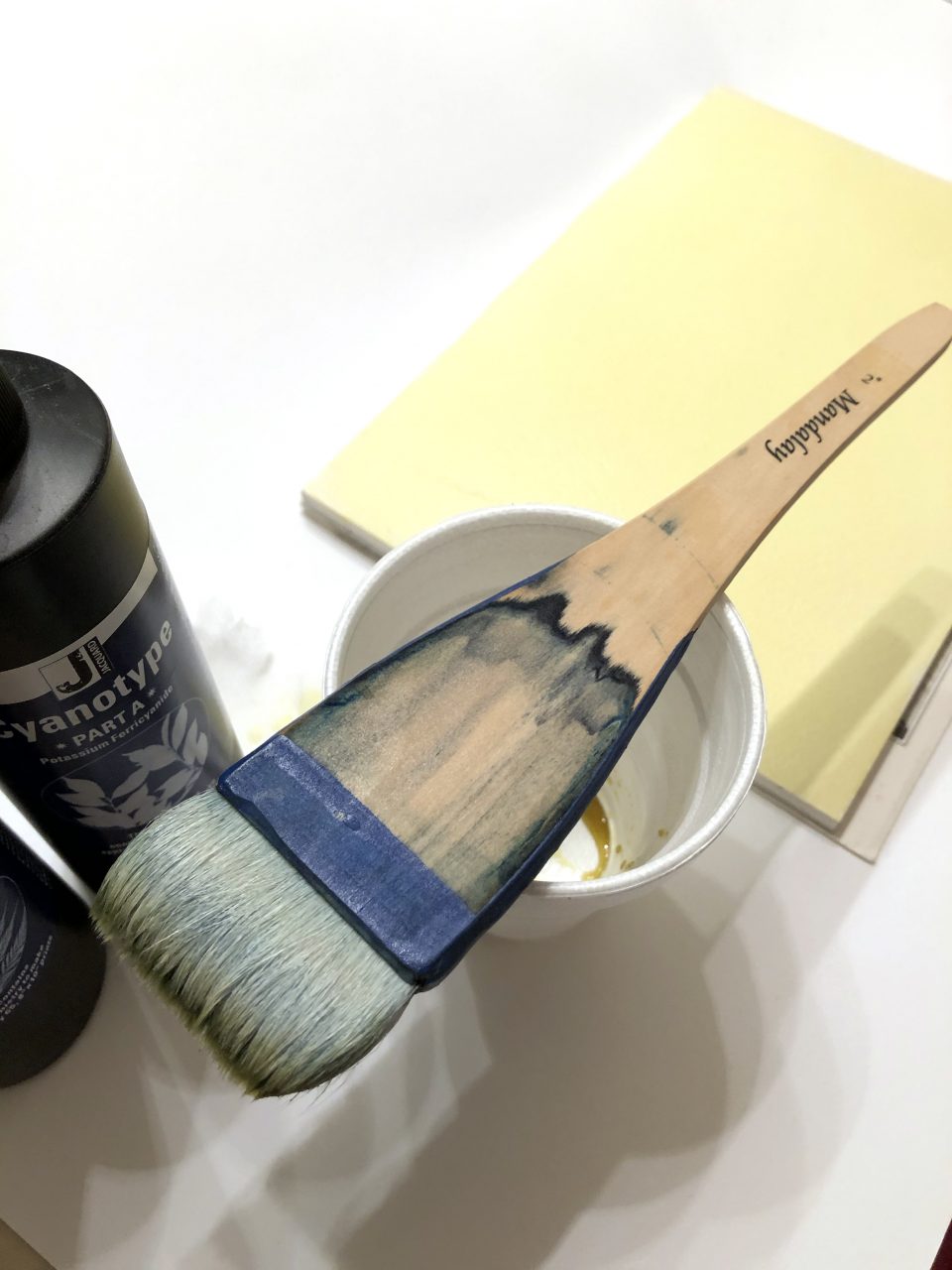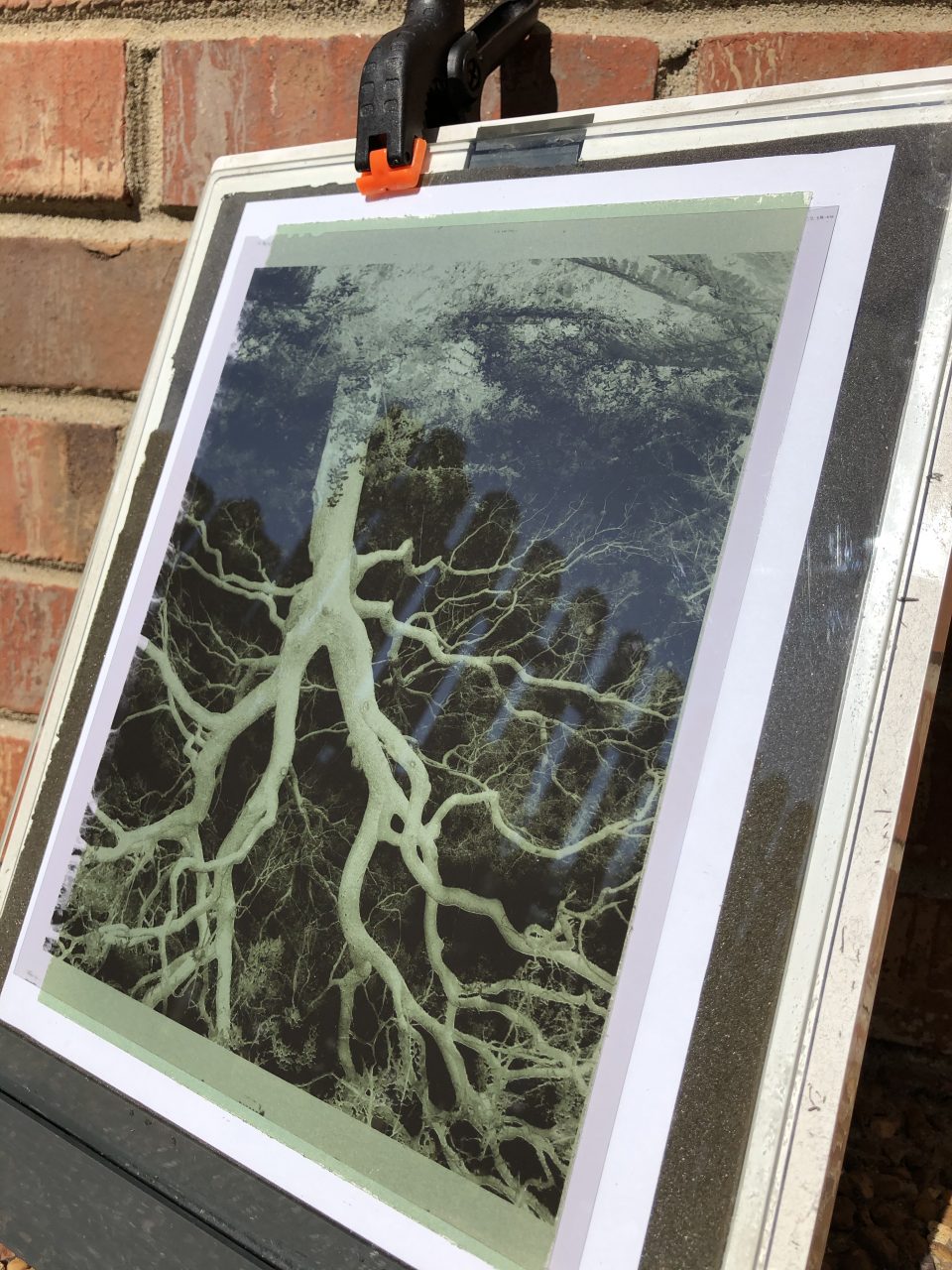Making cyanotype prints is a fun way to spend days when the light is too bright and harsh for photography
My perfect day for photography is one with soft-filtered sunlight or overcast conditions all day long. The soft light gives the photographer more control over how to adjust contrast in the final image. But, especially in the summer, there are a lot of blue-sky days when the light is too direct and harsh for any kind of outdoors photography.
While harsh sunlight may be bad for photography, it’s perfect for making sun prints — aka cyanotypes — aka blueprints!
The cyanotype is one of the oldest and easiest types of photographic print. No darkroom is needed, and the photo paper can be made and handled in room light, as long it’s not sunlight or UV light.
Video: Watch a cyanotype print develop, changing colors in sunlight
How to make cyanotypes
To make cyanotypes, only a few supplies are needed. Depending on your desired level of effort, you can buy paper, chemicals, and brushes to make your own printing paper, OR you can buy pre-sensitized paper that’s ready to use. Below are some options from Amazon*
What you’ll need:
- Pre-made, ready-to-use cyanotype paper OR
- Make your own paper — Chemicals, watercolor paper, flat bristle paint brush
- A sheet of glass or a frame to hold the paper flat in the sun (be careful not to cut yourself)
- Water
- Optional: Darkroom tray and hydrogen peroxide for faster developing
More detail on all of this can be found below.
Ready-to-use cyanotype papers
- Nature Print Paper Sun Activated, 5 x 7 Inches, Pack of 40
- SunPrint Paper Kit, Contains 15 sheets, 8″ X 12″, includes a 20 X 30 cm acrylic sheet to hold the paper flat
- Cyanotypes can also be made on FABRIC: Jacquard Cyanotype Pretreat Fabric Sheets, 10-Pack, 8.5″ x 11″
Make your own cyanotype paper

What you’ll need to make your own cyanotype paper:
- Chemicals
- Watercolor paper
- Paint brush
Chemicals — basic cyanotype kits are affordable and readily available online: Bostick & Sullivan Cyanotype Printing Kit
Watercolor paper — I prefer Arches brand because it’s durable and made to last a lifetime, but any brand will work. Paper surfaces come in rough, cold press (semi rough) and hot press (smooth).
Flat Paint Brush — for applying the chemicals to the paper. Apply chemicals in dim room light, but avoid any kind of UV light sources or you’ll expose the paper. You don’t need a heavy coat of chemicals, just brush carefully to make sure the paper’s texture is well covered.
Glass frame or acrylic sheet — use this to keep the paper flat.
Optional (but recommended) — Plastic tray with a bath of water and hydrogen peroxide. Cyanotypes take 24 hours to fully develop to a full blue color, but a quick dip in a hydrogen peroxide bath completes them in seconds.
Let the paper dry
If you make your own sensitized paper, let it sit in dark or dim light until dry, then use immediately.

Exposure time
In bright sunlight, let the paper sit for several minutes. Generally about 3 – 4 minutes will do the trick, but you can experiment until you find the right number for your prints. Watch the paper change colors as it develops in the sun — it’s fun to watch!




Develop your print in plain water
After you’ve left your paper in the sun for a few minutes, bring it inside, take it out of the frame, and rinse it under fresh tap water to process it. You’ll see it turn a deeper blue as you rinse it. As an alternative, you can place the print into a darkroom tray with plain water.
After it’s developed, let the paper dry for 24 hours to achieve full color . . . OR
Dip the finished print into a darkroom tray with water and a few caps full of hydrogen peroxide to see it immediately turn a deep, vivid blue. Then, rinse it again in plain water and let it dry overnight.



Take cyanotypes a step further: tone your blue prints
If you want to play a little more with cyanotypes, you can learn how to turn them a different color with toning in my previous blog post here: Toning Cyanotypes with Tea Tannins

Thanks for reading.
Be sure to visit me on Facebook, Instagram or Pinterest, or on my website at keithdotson.com.
~ Keith
* NOTE: This blog post contains Amazon affiliate links. I may receive a small payment on qualifying purchases.
